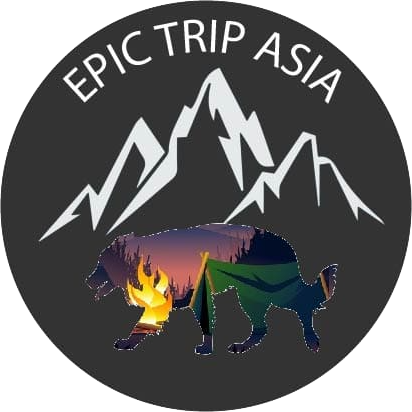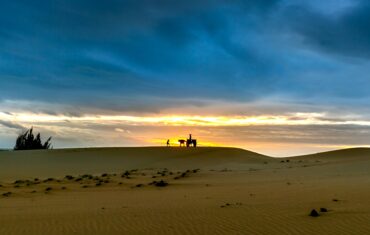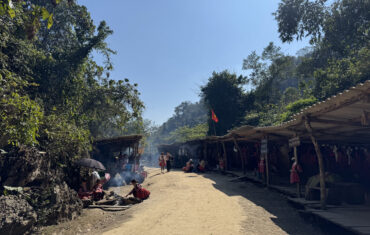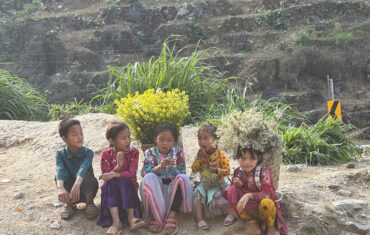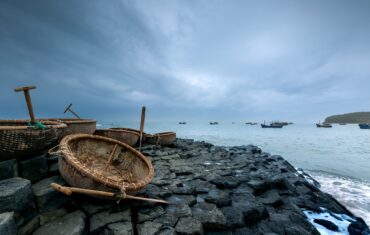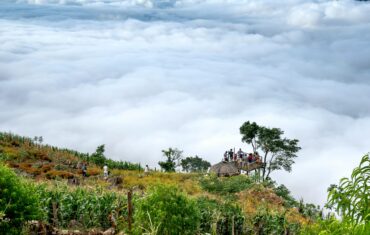Nowadays, Vietnam has become an attractive vacation destination for international tourists. Despite the ups and downs of its history, marked by devastating wars that caused severe damage, Vietnam has emerged with strength and resilience from the ruins to rebuild and develop itself to the point of its current robustness.
GEOGRAPHY
Vietnam is located at the eastern end of the Indochinese Peninsula in Southeast Asia and shares borders with three countries: China, Laos, and Cambodia.
It has an approximate area of 331,211.6 km2, with a land border stretching 4,639 km. The coastline spans 3,260 km from the north to the south of the country and is adorned with thousands of large and small islands. Vietnam’s distinctive “S” shape captures the attention of tourists who have visited, not only due to its natural beauty and famous landscapes, but also because of the hospitality of its local people.
CULTURE
Vietnam possesses a blend of traditional beauty mixed with modernity. Its culture carries the breath of modern times while still preserving the traditional characteristics of the past, appreciating and acknowledging the heritage of its ancestors. All of this has created a distinct, unique, and different beauty in Vietnam from the perspective of foreign tourists.
Vietnam has a diverse and rich culture that encompasses various aspects, such as an agricultural civilization based on wet rice cultivation, the influence of the Champa civilization in the central part of the country, and parts of the Khmer Empire in the south. It is essential to mention the respect for community and traditional family values, craftsmanship and manual labor, as well as devotion to education, among others.
Moreover, Vietnam is home to 54 ethnic groups, each with its own cultural characteristics, creating a vivid and colorful yet unified image.
HERITAGE AND WORLD RESERVES
Vietnam is home to 8 UNESCO World Heritage sites, such as the Ancient Town of Hoi An, the My Son Sanctuary, Ha Long Bay, Phong Nha-Ke Bang National Park, the Ho Dynasty Citadel, the Thang Long Imperial Citadel, the Complex of Hue Monuments, and the Trang An Landscape Complex, along with over 117 museums throughout the country.
Furthermore, Vietnam boasts 11 UNESCO World Biosphere Reserves, including the Can Gio Mangrove Biosphere Reserve, the Dong Nai Biosphere Reserve, the Cat Ba Biosphere Reserve, the Red River Delta Biosphere Reserve, the Kien Giang Coastal Biosphere Reserve, the Western Nghe An Biosphere Reserve, the Cape Ca Mau Biosphere Reserve, the Cu Lao Cham Biosphere Reserve, the Langbian Biosphere Reserve, the Nui Chua Biosphere Reserve, and the Kon Ha Nung Plateau Biosphere Reserve.
When visiting Vietnam, visitors have the opportunity to enjoy its beautiful natural landscape along with the kindness and hospitality of the Vietnamese people.
CURRENCY
When visiting Vietnam, one cannot forget to familiarize themselves with the local currency. The Vietnamese currency is the Dong, and it comes in denominations of 200, 500, 1000, 2000, and 5000 dong, followed by bills of 10,000 dong, 20,000 dong, 50,000 dong, all the way up to 100,000 dong, 200,000 dong, and the largest bill of 500,000 dong (currently, the 200 and 500 dong bills are no longer in circulation). While some transactions may accept US dollars, this practice is limited, so it’s better to exchange to Dong in all cases. Traveler’s checks are generally not accepted, and credit cards have limited acceptance. Some upscale hotels, restaurants, and supermarkets do accept credit cards, but smaller restaurants, roadside shops, and traditional markets only accept cash payments.
SAFETY
Vietnam is gradually becoming a safe tourist destination from the perspective of foreign tourists. However, visitors should not be careless, as there are good people and also individuals with ill intentions anywhere in the world.
It is important for tourists to take care of their important personal belongings, such as money, passports, jewelry, etc. It is advisable not to carry large amounts of cash, avoid leaving valuable items in the back pocket, refrain from wearing expensive jewelry, and not get distracted by the mobile phone while riding a motorcycle, among other safety tips.’
FRAUD
Most foreign tourists do not understand the Vietnamese language, so it is important to take precautions to avoid problems such as fraud in big cities. Before getting into a taxi, visitors should negotiate the fare in advance, and it is advisable to use ride-hailing apps such as Grap or Bee. Additionally, most hotels provide safes where tourists can store valuable items like passports, identification documents, and other high-value belongings.
HEALTHCARE
Before deciding to visit any country, it is necessary to familiarize oneself with its healthcare system. The healthcare system in Vietnam has made significant advancements in terms of facilities, equipment, quality of patient care, and medical services.
In recent years, Vietnam has focused on improving its policies and laws, as well as enhancing the service attitude and professional qualifications of medical staff.
Additionally, visitors should be aware of some typical diseases in Vietnam, such as dengue fever, influenza, skin allergies, and conjunctivitis.
TRANSPORTATION
Overall, Vietnam’s transportation infrastructure is on par with other advanced countries in the region. In recent years, the Vietnamese government has focused on improving the transportation infrastructure, including roads, railways, and inland waterways, especially airports and seaports, to support the country’s development.
Visitors can reach Vietnam by air, land, or sea. In Vietnam, tourists have various means of transportation available, such as motorcycles, cars, buses, and trains for land travel; planes and helicopters for air travel; and boats, ferries, canoes, and cruises for water travel.
Vietnam is known for having a high number of motorcycles, and first-time visitors are often surprised by the sheer number of motorcycles on the streets. In this article, we would like to provide you with an overview of Vietnam’s traffic situation.
During weekends and holidays, the number of motorcycles on the road can be overwhelming, and traffic congestion is common in major cities during rush hours. However, Vietnam has a significant number of traffic police to ensure safety and maintain order on the roads.
For many tourists, crossing the street in Vietnam can be an adventurous experience. Here’s a tip: when crossing the street, it’s best to look in the direction of oncoming vehicles and walk slowly, raising your hand if necessary. Don’t worry, drivers are aware of pedestrians and generally drive safely.
Crossing the street in Vietnam can be fun and exciting for many visitors!
THE CLIMATE
Located entirely within the tropical belt of the Northern Hemisphere, Vietnam has a humid tropical monsoon climate with typical characteristics of this climate type, which vary significantly from north to south. Each year, the country receives a substantial amount of solar radiation, resulting in a warm climate, especially in the southern provinces.
Vietnam’s climate can be divided into three regions across the country. In the north, the four seasons are experienced: spring, summer, autumn, and winter (spring lasts from January to March, summer from April to June, autumn from July to September, and winter from October to December). The summer is warm and rainy, while the winter is cold and dry. In contrast, the climate in the south has two seasons: the rainy season and the dry season. The rainy season lasts from late April to October, while the dry season extends from November to April of the following year.
Thanks to the diverse climate and abundant solar radiation received throughout the year, Vietnam enjoys favorable conditions for the development of rice agriculture, forestry, and fishing.
TOURISM
In recent years, tourism in Vietnam has become an important economic sector in the country and has experienced significant growth, thanks to its diverse and rich tourism potential, which includes:
World Heritage Sites and Biosphere Reserves: Vietnam currently boasts 8 UNESCO World Heritage Sites and 11 Biosphere Reserves (please refer to the section on “WORLD HERITAGE AND BIOSPHERE RESERVES”).
Additionally, Vietnam is home to 33 national parks, such as Ba Be, Cat Ba, Tam Dao, Phu Quoc, Tram Chim, and more, with around 400 thermal springs ranging from 40 to 120 degrees Celsius. Many of these destinations have well-developed infrastructure, such as the natural thermal spring of Binh Chau in Ba Ria – Vung Tau, Ninh Binh’s thermal spring, and Quang Hanh’s thermal spring in Quang Ninh. Vietnam is often described as having a “golden forest and silver sea.” The country has tremendous potential for tourism development, encompassing plains, mountains, and central regions, offering countless breathtaking landscapes.
Vietnam’s tourism is incredibly diverse, catering to various types of foreign tourists. The country consistently ranks among the world’s fastest-growing tourism destinations.
GASTRONOMY
Are you food lovers? Do you enjoy exploring new flavors? Then, I invite you to discover Vietnamese cuisine and immerse yourself in the culinary culture of the country. I assure you it will be an exceptional experience that leaves a strong impression on both local and foreign tourists.
Local gastronomy goes beyond mere food; it also represents the traditional cultural values of the country. Vietnamese dishes are passed down from generation to generation, preserving and promoting the Vietnamese culinary culture. In fact, Vietnamese cuisine has become one of the most popular in the world, with famous dishes such as Phở (rice noodle soup with beef or chicken), Bánh Mì (Vietnamese sandwich), Bún Chả (grilled pork with rice noodles), and Bánh Xèo (sizzling pancake).
The country is divided into three regions: North, Central, and South, and each has its own cuisine with distinctive characteristics and flavors. This contributes to the richness and diversity of Vietnamese gastronomy. The dishes in each region have different flavors, preparation methods, and names. For example, in the North, fewer spices are used to achieve a perfect balance of flavors – not too sweet, not too sour, and less spicy, representing elegance and frugality. In the Central region, the main flavors are salty, spicy, and slightly sweet. On the other hand, Southern cuisine is considered a symphony of both Vietnamese and foreign culinary influences, with more creative adaptations. Southern dishes tend to be sweeter and are like harmonious works of art in terms of both appearance and taste, making them irresistibly attractive.
Vietnamese culinary culture is an experience worth having when visiting the country. The dishes are not only visually appealing but also delicious and showcase great culinary creativity.
THE BEST TIME TO VISIT VIETNAM
Vietnam is a country with a year-round tropical monsoon climate, so you can visit the country any time of the year. In each season, you can experience Vietnam in different aspects and beauty.
From December to February of the following year, it’s the Lunar New Year and also winter in the North and the dry season in the South. It’s the best time to visit northern Vietnam when apricot blossoms, plum flowers, and peach blossoms start to bloom wonderfully with temperatures that can drop below 0 degrees Celsius, allowing visitors to admire the snow while observing the flowers blooming. In the southern part of the country, the weather is pleasant and not too hot.
February is also the ideal time to visit the Central Highlands, thanks to the pleasant climate with almost no rain and cool weather, suitable for visiting coffee and rubber plantations, as well as exploring majestic and wild mountains.
In March, the northern region enters the spring drizzle season. It’s also the blooming season of white bauhinia flowers in Dien Bien (northwest of the country) and sunflowers in Nghe An (central region). Additionally, it’s a good time to visit the former capital of Hue and Quang Binh.
April is the season for rice planting and transplanting in Sapa. You can witness scenes where people are busy in the fields everywhere, and the fields are filled with interesting silver water. It’s also a good time to take a vacation on the coast of Phan Thiet or the islands of Phu Quoc and Con Dao in the south of the country.
In May, summer arrives with clearer skies and a brighter sun. It’s also the time when the sea and islands become even more beautiful. You shouldn’t miss Ha Long Bay, a UNESCO World Heritage Site; Co To Island, known as the “paradise island” with pristine white sandy beaches and crystal-clear waters; or Cat Ba Island, the green jewel of Ha Long Bay.
June and July are the summer months in the north and also the rainy season in the south. It’s the ideal time to visit Phu Yen, considered the “untouched pearl” of Central Vietnam tourism, with crystal-clear beaches, warm blue waters, and white sandy banks. You can also visit the beaches of Quy Nhon with crystal-clear water, which is a great place for diving and snorkeling to see coral reefs. Or you can visit Da Nang and Hoi An in the central part of the country, or head west to enjoy a variety of tropical fruits.
August is a good time to visit the beautiful landscapes of Cao Bang, especially the Ban Gioc Waterfall.
September and October are the best time to travel to the south and west of Vietnam. It’s the lotus season in Dong Thap, where visitors can not only enjoy beautiful landscapes and the peaceful daily life of the locals but also have the opportunity to taste lotus-based specialties. Likewise, these two months are the high-water season in the Mekong Delta, known as the “Nine Dragons River Delta.” You can experience the typical life of the southwestern region of the country. Additionally, during this time, you can visit the ancient town of Hoi An, where you can see thousands of colorful lanterns everywhere, creating the atmosphere of the Mid-Autumn Festival.
In November, we return to the northwest of the country. It’s the ideal time to visit the triangular circuit flowers in Ha Giang. It’s also the season of wild sunflowers along with the white plum flowers that beautify the beautiful landscape in the Moc Chau plateau.
With the above information, EPIC TRIP ASIA hopes to help you have the most interesting experiences throughout Vietnam.
